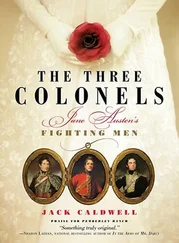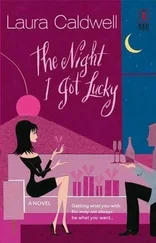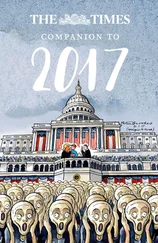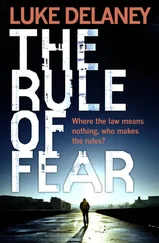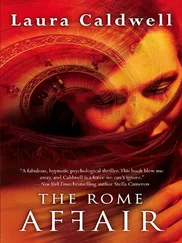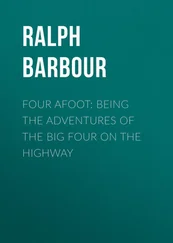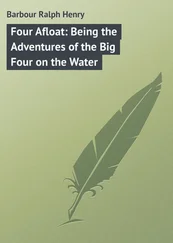I know what I'm doing, Paul says, already making for the hallway.
Charlie gives me a heavy look, but says nothing as I follow Paul out the door.
The art museum sits like an old Mediterranean palace across the courtyard from Dod. From the front, where we entered a few hours earlier, it's just a stumpy modern building with a Picasso sculpture on the front lawn that looks like a glorified birdbath. When you approach from the side, though, the newer elements give way to older ones, pretty windows in little Romanesque arches, and red roof-tiles that peek out beneath tonight's canopy of snow. Under different circumstances, the view from here would be charming. Under different circumstances, it might be a picture Katie would take.
What are we doing? I ask.
Paul is trudging a path before me in his old workman's boots.
I found what Richard thought was in the diary, he says.
It sounds like the middle of a thought whose beginning he's kept to himself.
The blueprint?
He shakes his head. I'll show you when we get inside.
I'm walking in his footsteps now to keep the snow out of my pant legs. My eyes keep returning to his boots. Paul worked at the museum loading docks our freshman summer, moving incoming and outgoing exhibits onto trucks. The boots were a necessity then, but tonight they leave dirty tracks in the moon-white of the courtyard. He looks like a boy in men's shoes.
We arrive at a door by the west face of the museum. Beside it is a tiny keypad. Paul dials in his docent's password and waits to see if it works. He used to give tours at the art museum, but finally had to take a job in the slide library because the docents weren't paid.
To my surprise, the door opens with a beep and a whisper of a click. I'm so used to the medieval-sounding bolts of the dorm doors, I almost don't hear it. He leads me into a small antechamber, a security room supervised by a guard behind a plate-glass window, and suddenly I feel trapped. After signing a visitation form on a clipboard, though, and pressing our university IDs against the glass, we're cleared to enter the docent's library beyond the next door.
That's it? I say, expecting more of a shakedown at this hour.
Paul points to a video camera on the wall, but says nothing.
The docent's library is unimpressive-a few shelves of art history books donated by other guides to help prepare for tours-but Paul continues toward an elevator around the corner. A large sign posted on the sliding metal doors says faculty, staff, and security only, students and docents NOT permitted without escort. The words students and docents have both been underlined in red.
Paul is looking somewhere else. He pulls a key ring from his pocket and plugs one of them into a slot in the wall. When he turns it to the right, the metal doors slide open.
Where'd you get that?
He leads me into the elevator, then presses a button. My job, he says.
The slide library gives him access to archival rooms in the museum. He is so careful about his work that he has earned almost everyone's trust.
Where are we going? I say.
Up to the image room. Where Vincent keeps some of his slide carousels.
The elevator discharges us on the main floor of the museum. Paul guides me across it, ignoring the paintings he's pointed out to me a dozen times before-the vast Rubens with its dark-browed Jupiter, the unfinished Death of Socrates with the old philosopher reaching for his cup of hemlock. Only when we pass the paintings Curry brought for the trustees1 exhibit do Paul's eyes wander.
We reach the door to the slide library, and he produces the keys again. One of them shifts quietly into place, and we enter the darkness.
Over here, he says, pointing toward an aisle of shelves lined with dusty boxes. Each box contains a slide carousel. Behind another locked door, in a large room I've seen only once, rests much of the university's collection of art slides.
Paul finds the set of boxes he's been searching for, then lifts one from the stack and places it on the shelf before him. A note taped to the side, written in a sloppy hand, says MAPS: ROME. He takes the top off and carries the box to the small open space near the entrance. From another shelf he produces a slide projector, which he plugs into a wall socket near the ground. Finally, with the flick of a switch, a blurry image appears on the opposite wall. Paul adjusts the focus until it sharpens into position.
Okay, I say. Now tell me what we're doing here.
What if Richard was right? he says. What if Vincent stole the diary from him thirty years ago?
He probably did. What does it matter now?
Paul brings me up to speed. Imagine you're in Vincent's position. Richard keeps telling you the diary is the only way to understand the Hypnerotomachia . You think he's blowing smoke, just a college kid with an art history degree. Then someone else shows up. Another scholar.
Paul says it with a certain respect. I gather he's referring to my father.
Suddenly you're the odd man out. Both of them say the diary is the answer. But you've painted yourself into a corner. You've told Richard the diary is useless, that the portmaster was a charlatan. And more than anything, you hate being wrong. What do you do now?
Paul is trying to convince me of a possibility I've never had trouble accepting: that Vincent Taft is a thief.
I get it, I say. Goon.
So you somehow steal the diary. But you can't make anything of it, because you've been looking at the Hypnerotomachia all wrong. Without the ciphered messages from Francesco, you don't know what to do with the diary. What then?
I don't know.
You're not going to throw it away, he says, ignoring me, just because you don't understand it.
I nod my agreement.
So you keep it. Somewhere safe. Maybe the lockbox in your office.
Or in your house.
Right. Then, years later, this kid comes along, and he and his friend start making progress on the Hypnerotomacbia. More than you expected. In fact, more than you made in your prime. He starts finding the messages from Francesco.
You start thinking the diary might be useful after all.
Exactly.
And you don't tell the kid about it, because then he would know you stole it.
But, Paul continues, arriving at his point, say one day someone found it.
Bill.
Paul nods. He was always in Vincent's office, at Vincent's house, helping with all the little projects Vincent made him do. And he knew what the diary meant. If he'd found it, he wouldn't have just put it back.
He would've brought it to you.
Right. And we turned around and showed it to Richard. Then Richard confronted Vincent at the lecture.
I'm skeptical. But wouldn't Taft have realized it was gone before that?
Of course. He had to know Bill took it. But what do you think his reaction was when he realized Richard knew about it too? The first thing on his mind would've been to go find Bill.
Now I understand. You think he went to Stein's office after the lecture.
Was Vincent at the reception?
I take it as a rhetorical question until I remember Paul wasn't there; he'd already left to find Stein.
Not that I saw.
There's a hallway connecting Dickinson and the auditorium, he says. Vincent didn't even have to leave the building to get there.
Paul lets it sink in. The possibility drifts through my thoughts clumsily, tethered to a thousand other details. You really think Taft killed him? I ask. A strange silhouette forms from the shadows of the room, Epp Lang burying a dog beneath a tree.
Paul stares at the black contours projected on the wall. I think he's capable of it.
Out of anger?
I don't know. But he already seems to have been through all of the scenarios in his mind. Listen, he says, when I was waiting for Bill at the Institute, I started reading the diary more carefully, looking for every mention of Francesco.
Читать дальше



